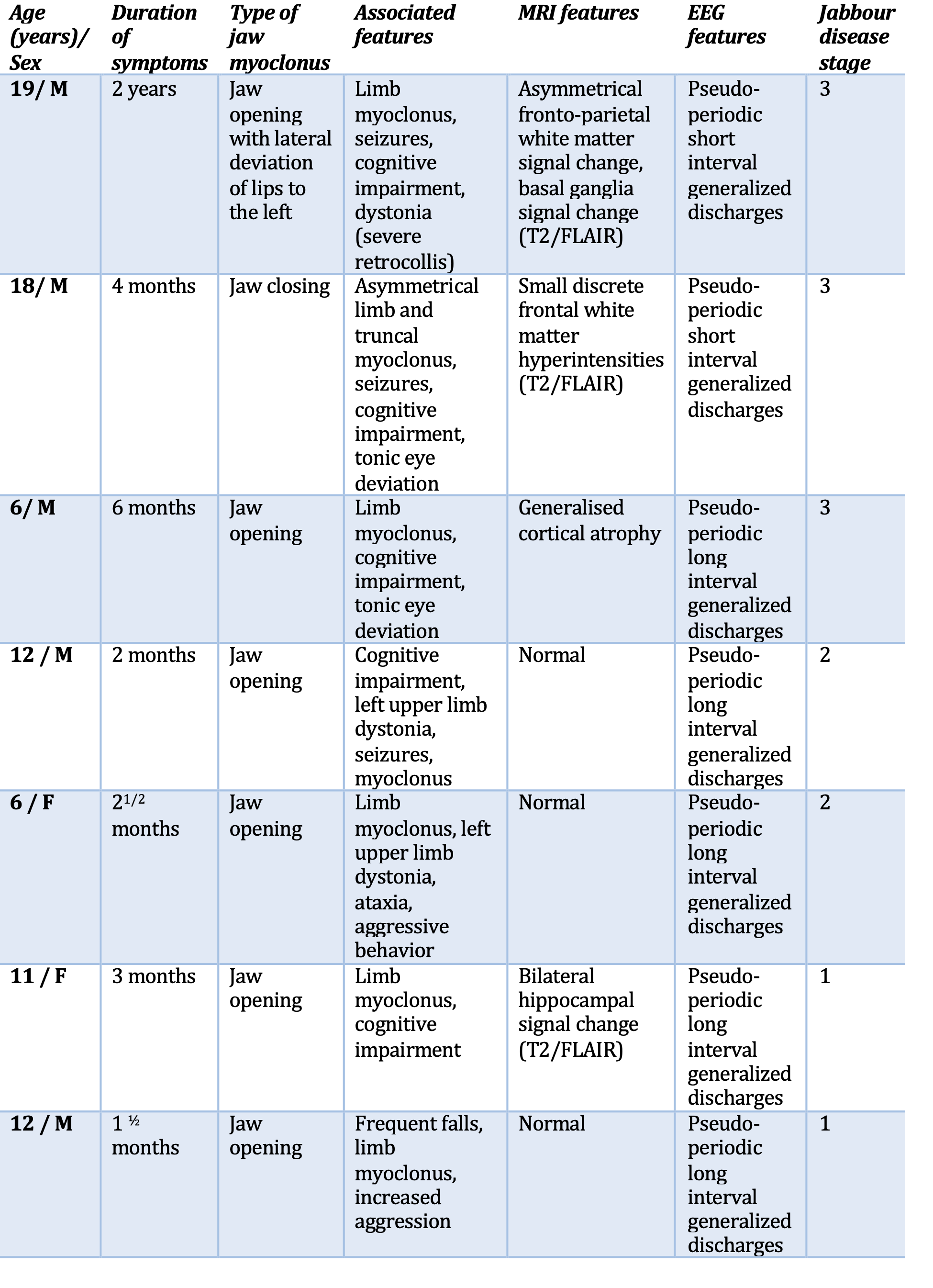Category: Myoclonus
Objective: We aimed to study the frequency of jaw myoclonus in subacute sclerosing panencephalitis (SSPE).
Background: SSPE is a rare disorder due to mutant measles virus infection of the brain. Clinical hallmarks include myoclonus, cognitive deterioration and seizures. Children in the age group of 5-15 years are most frequently affected, although adult presentation is well reported. Typical myoclonus is axial, involving trunk and neck, and leads to head drops and falls.The myoclonus has a characteristic slow relaxation phase. We have recently noted the presence of jaw-opening myoclonus in several patients with SSPE.
Method: We conducted a prospective study among 56 patients diagnosed to have SSPE as per the modified Dyken criteria. We also assessed 22 consecutive patients with myoclonus due to other etiologies during the same time period. Clinical and evaluation details were recorded. Video recording of all patients were analyzed for the occurrence of jaw myoclonus.
Results: Fifty-six patients with SSPE were assessed. Median age (interquartile range, IQR) at presentation was 6(4.5-9) years and at onset was 5.9 (4.1-8.5) years. Median disease duration was 120 (60-210) months. Median Jabbour stage was 2(2-3). Jaw myoclonus was observed in seven (12.5%) patients (Table 1). Six patients demonstrated jaw opening myoclonus and one had jaw closing myoclonus. Patients with myoclonus due to other etiologies included: inherited myoclonus-dystonia syndrome (2), infections (HIV (1), scrub typhus (1)), drug-induced myoclonus (Selective Norepinephrine reuptake inhibitor (2), pregabalin (1), lithium (2), amantadine (1)), autoimmune encephalitis (anti-LGI1, anti-Thyroid peroxidase, and anti-GAD related (1 each)), neuronal ceroid lipofuscinosis (1), Wilson’s disease (1), uremia (3), hyperammonemia (2) and post-hypoxic encephalopathy (2). We did not observe the presence of jaw myoclonus amongst any of this latter group of patients.
Conclusion: Jaw myoclonus is infrequently observed in SSPE. Jaw opening myoclonus is more common than jaw closing myoclonus. We suggest that the presence of jaw involvement with myoclonus in a young patient, especially if accompanied with limb/axial myoclonus, seizures or cognitive impairment should uniquely raise suspicion for SSPE. We also suggest that this is a new phenotypic observation, which may serve as a diagnostic clue.
To cite this abstract in AMA style:
D. Garg, S. Sharma. Jaw opening myoclonus in Subacute Sclerosing Panencephalitis: A new phenotypic observation which may be a diagnostic clue [abstract]. Mov Disord. 2023; 38 (suppl 1). https://www.mdsabstracts.org/abstract/jaw-opening-myoclonus-in-subacute-sclerosing-panencephalitis-a-new-phenotypic-observation-which-may-be-a-diagnostic-clue/. Accessed December 29, 2025.« Back to 2023 International Congress
MDS Abstracts - https://www.mdsabstracts.org/abstract/jaw-opening-myoclonus-in-subacute-sclerosing-panencephalitis-a-new-phenotypic-observation-which-may-be-a-diagnostic-clue/

